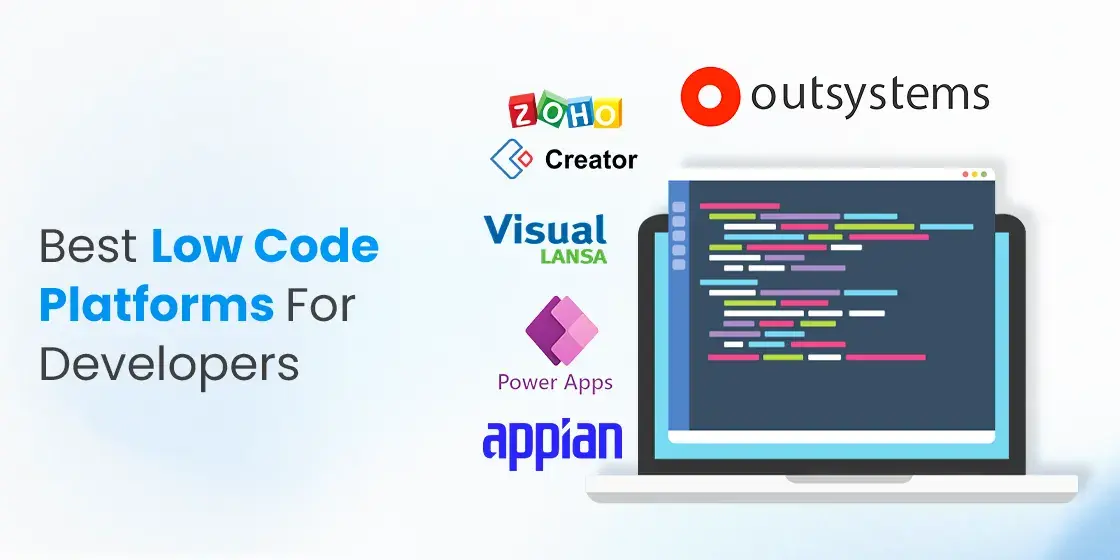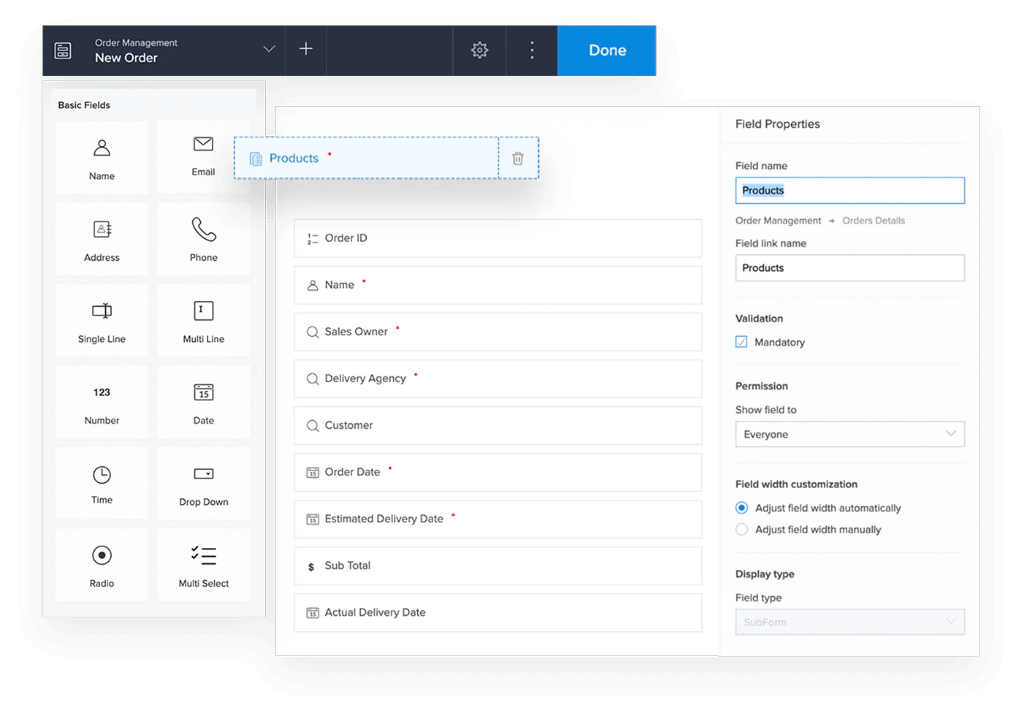Free Facts On Choosing Low-code platforms for application development
Free Facts On Choosing Low-code platforms for application development
Blog Article
Development Of Low-Code Apps Is Quicker.
The development of applications using low-code significantly improves development speed due to several key factors: Visual Development Environment:
Drag-and-Drop Interfaces: Low-code platforms provide visual tools for designing applications. Drag-anddrop components enable developers to build apps quickly, without needing to write code.
Many low-code platforms include pre-built templates or components that permit developers to quickly prototype applications and build applications without starting with a blank slate.
Reduced Coding Requirements:
Automated Code Generation Low-code platforms automatically create the code that is used to build the visual models designed by programmers. This reduces the requirement to manually code and accelerates development.
Reusable components: Developers can to use reusable component across a variety of projects, which reduces the time they spend writing and testing code.
Collaboration is streamlined:
Low-code development platforms are typically equipped with tools, such as deployment, version control, and testing. This enables seamless collaboration between teams.
Citizen Development: Business users and non-developers can contribute to application development by using intuitive interfaces, thus reducing bottlenecks of development often caused by the lack of availability of professionals.
Rapid prototyping and rapid iteration:
Rapid prototyping: Developers can create quickly prototypes in order to gather feedback and validate ideas, resulting in faster cycles of iteration.
Easy Modifications. Visual development makes it easy for users to update and modify their applications.
Pre-built Integrations:
API Integrations: Low-code platforms usually come pre-built with connectors to popular APIs and services. This can reduce the time required to connect external systems.
Data Integration: The tools integrated within the software ease and speed up the process of connecting databases, data sources and applications.
Deployment of Scaling:
One-Click Embedded Deployment: Many low-code platforms have the option of deploying with one click, drastically cutting down on the time and effort needed to deploy software.
Cloud-Based Solutions: Cloud-based low-code platforms can handle scaling and infrastructure management which allows developers to concentrate on the application's logic and function rather than the logistics of deployment.
The rapid development of low-code apps is in its ability to simplify and automate many aspects of the application development process. This facilitates faster development of apps and faster adaption to changes in requirements. Follow the top see page for Low-code Platform for application development for site info including application modernization software, mobile development platforms, push notifications, application modernization software, application modernization, cross platform mobile dev, database in azure, develop web app, mobile development platforms, cross platform app development and more.
Benefits Low-Code Apps In Governance And Safety
Low-code applications offer a number of advantages in terms of security and governance. Both are essential for ensuring that applications are compliant, secure and properly managed throughout their lifecycle. Here are the benefits of developing low-code applications:
Unified Management console: This low-code platform typically provides a central dashboard where administrators can control and monitor all applications and ensure that the governance is consistent across the organisation.
Role-Based Access Control RBAC: These platforms come with robust controls based on role that allow administrators to set access rules. Only authorized users are able to change or access specific elements of a program.
Compliance and Regulatory Adherence
A lot of low-code platforms have built-in compliance functions. For example, they are built in line with the industry standards, regulations and laws (e.g. HIPAA, GDPR). They offer frameworks and tools that ensure applications meet the specifications.
Audit Trails and Logging Audit trails and logs that are comprehensive are usually integrated, allowing organizations to track changes, monitor access, and ensure compliance with internal and external laws.
Improve Security Measures
Data encryption. Low code platforms usually provide encrypted data built-in when in transit as well as when in rest. This helps protect sensitive information.
Security Certificates: Many low code providers have security certificate (e.g. ISO 27001 and SOC 2) which demonstrate they adhere to the strictest security guidelines. They also provide an extra level of assurance to customers.
Automated Security Updates
Regular Security Updates and Patches Low-code platforms handle automatically security updates, patches and updates. Thus, applications are protected from current threats without requiring developer intervention manually.
Security Monitoring: Continuous monitoring of security tools are usually provided, providing immediate alerts and insight into potential security issues.
Data Governance:
Data Access Policies These platforms allow companies to establish data access rules and enforce them, ensuring data is only available to authorized users. They also ensure that the data is being used in a safe manner.
Data Masking & Anonymization: Built-in tools to mask and anonymize data safeguard sensitive data, particularly in testing and development environments.
Application lifecycle management that is consistent:
Pipelines for Development and Deployment Low-code platforms usually offer integrated pipelines for development and deployment which include security checks, which ensure security remains intact throughout the entire application lifecycle.
Version Control. Integrated version management can help identify and reverse any modifications made to the application, making sure that the integrity of it is protected.
User authentication:
Single Sign-On (SSO): Single sign-on support as well as other advanced authentication methods simplify management of users and improves security.
Multi-Factor Authentication Numerous platforms are equipped with integrated functionality to verify multi-factor identities and provide an additional layer for security.
Policy Enforcement and Compliance:
Low-code platforms often come with policies templates pre-defined that enable organizations to implement cybersecurity and governance policies quickly.
Compliance Monitoring Tools: They provide continuous monitoring and report on compliance status. This makes it easier to spot potential problems and take action to address them.
Integrate into existing security infrastructures:
Seamless Integrate: Low-code platform are designed to integrate seamlessly with existing security infrastructure and tools, such as identity management tools, SIEMs (Security Information and Event Management Solutions), and firewalls.
API Security: API security features built-in allow integration with other systems, securing data and maintaining integrity of applications.
Training and Best practices
Best practices: Many platforms provide guidelines for creating secure applications and provide best practices. This helps non-developers to adhere to security standards.
Security Training: Some companies of low-code provide education and resources in security to help users learn how to design and develop secure applications.
Low-code development can provide a range of security and governance benefits that ensure applications are developed and maintained in a timely way, safe and in compliance. These platforms have the frameworks, tools and regulatory compliance that are required to safeguard sensitive customer information as well as enforce policies and ensure compliance with regulatory requirements as well as simplifying the administration and supervision over the process of developing applications. Read the top rated Legacy application modernization with Low-code for more recommendations including application modernisation, rapid app development, cloud software applications, app dev platform, app modernization, database in azure, cloud software applications, sso azure, sso azure, push notifications android and more.
Low-Code Software Can Be Beneficial In The Area Of Collaboration And Workflow
The low-code approach to application development offers a variety of advantages in terms of workflow and collaboration that make it a fantastic choice for companies seeking to improve team productivity and streamlining their process of development. These are the major benefits.
Unified Development Environment (UDE): Low-code platforms provide a single, unified development environment that enables everyone in the team, including developers and business analysts, to work together efficiently. This removes the barriers.
Visual Development Tools - The drag-and drop visual nature of low-code platforms allows for non-technical staff to take part in the development process. This helps ensure that all requirements of the business are captured and implemented accurately.
Communication Enhancement:
Real-Time collaboration: Many low code platforms provide real-time communication features like simultaneous editing and commenting. Instant feedback is also accessible. This helps to reduce the amount of time required to have a back and forth conversation.
Shared Workspaces: Teams are able to collaborate in shared workspaces which allows them to view the, edit and debate elements of the project, making sure everyone is on the same page and pursuing shared goals.
The management of workflows has been simplified
Built-in Tools for Project Management: Platforms that are low-code often include integrated project management tools that help teams plan and track their development projects. This includes task assignment as well as progress tracking and management of deadlines.
Workflow Automation Automating repetitive tasks and workflows will reduce errors and efforts which allows employees to focus on strategic activities while improving efficiency.
Speedier Iteration Cycles
Rapid prototyping. A low-code platform allows quick prototyping. This means feedback can be quickly integrated and changes made.
Agile Development Support Agile Development Support: Support for agile methods allows teams to be working in sprints, constantly offering small increments of functionality and making it easier to respond to changing requirements.
Accessibility:
Citizen Development: Low-code platforms allow users in the business (citizen developers) to design and develop applications with no coding expertise. This relieves IT and Development teams of burdens and allows quicker responses to business needs.
Training and Onboarding Easy interfaces and extensive training materials make it simpler for new members of the team to learn the ropes, enhancing the overall collaboration within the team.
Centralized Documentation, Knowledge Sharing, and Information Sharing
Low-code platforms usually have the ability to create, maintain and storing documentation within their platforms. This lets all the project information to be centrally stored and easily accessible.
Knowledge Repositories. Teams can create repository for knowledge that includes templates and parts that can be reused. This can facilitate knowledge sharing, and reduce the amount of duplicate information.
Consistency in Standardization:
Standardized Components : The use standardized components that are pre-built and built provides consistency between the different applications. This makes it easier for the members of the team to understand different parts of a particular project and then work on them.
Governance and Compliance - Built-in governance frames ensure that the development process of all applications adheres to organizational standards as well regulatory standards. This reduces non-compliance risk and assures that applications comply with quality standards.
Feedback loops:
Integrated Feedback mechanisms: Low-code platform usually have an integrated feedback mechanism, which allows users to give their feedback to applications. Feedback can then become integrated into the development.
Continuous Improvement: The ability to rapidly iterate and deploy changes based on feedback assures the continuous improvement of apps that are in line with user needs and business goals.
Visualization & Reporting
Real-time analytics The built-in analytical and reporting tools provide real-time information about project progress, performances, and user interactions. They allow an informed, data-driven decision-making.
Visual Workflow Maps Tools for mapping workflows or processes are useful for teams to comprehend their processes. They can also identify the bottlenecks that are present, as well as areas that require improvement.
Low-code apps offer a variety of advantages in collaboration and workflow. This includes the ability to bring different teams together in one place, streamline communications, and automate certain processes. This results in a more efficient and agile environment of development that is collaborative.